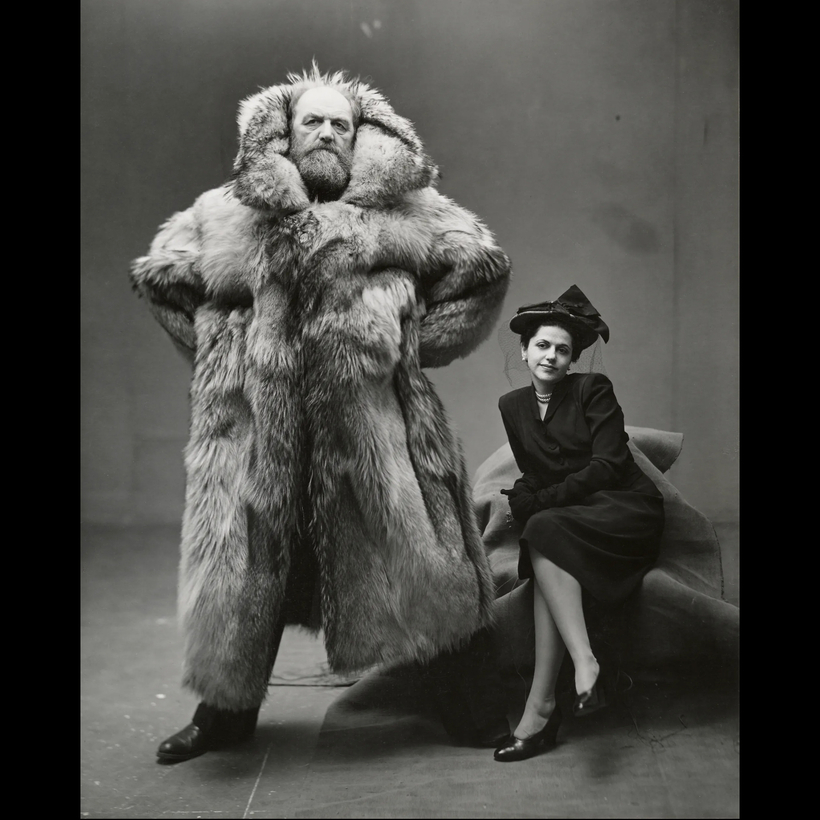The Danish explorer Peter Freuchen was a character in every sense of the word, a man whose life would have made even Don Quixote jealous. While researching my new book about him, Wanderlust: An Eccentric Explorer, an Epic Journey, a Lost Age, I marveled at how much could be packed into just one life span—and how wide-ranging those adventures could be.
Born in 1886 and about six-and-a-half-feet tall, Freuchen began his career as an Arctic explorer, and I quickly lost count of how many times he almost died while facing down some extreme peril. Then there were his marriages, which tended to be open and eclectic: the first to an Inuit woman, the second to a margarine heiress, the third to a fashion illustrator for Vogue.

Nor did his many friendships ever fail to surprise: Herbert Hoover was a fan, Paul Robeson was the best man at his third wedding, and his fellow explorer Sir Hubert Wilkins helped start a religious movement that eventually influenced the thinking of L. Ron Hubbard, Jimi Hendrix, and Jerry Garcia. Freuchen’s life—and I’ve only skimmed the surface here—was a circus tent full of out-of-nowhere adventures and unexpected encounters.
Made for the Movies
With a life like this, it was only a matter of time before Hollywood came calling. In 1932, MGM—then beginning its ascent as America’s “prestige” studio—wanted Freuchen’s help making one of the most ambitious movies in film history.
But the movie wasn’t about Freuchen, as one might assume. The studio wanted to adapt Eskimo, a best-selling novel Freuchen had written while recovering from the loss of his foot after an extreme case of frostbite during the Fifth Thule Expedition, in northern Canada in the early 1920s. The loss of his foot didn’t prevent Freuchen from exploring, but it did inspire a successful parallel career as a writer.

Eskimo drew on Freuchen’s countless near-death experiences while living in the Arctic, but what made it particularly special—and applauded by critics, including the renowned anthropologist Margaret Mead—was his sensitive portrayal of the northern Greenland Inuit, whose culture he had adopted while living among them for more than a decade. At a time when many popular depictions of Inuit peoples fell prey to “noble savage” clichés, Freuchen fostered empathy for a people whose culture was being disrupted by outside forces they had little control over, and never by overly romanticizing them or being preachy.
MGM hoped Freuchen’s involvement—as a consultant, assisting with the script, and cast as the movie’s villainous sea captain—would lend the film authenticity and provide a good marketing hook. The explorer, for his part, was excited to see his work turned into a blockbuster that would help Westerners see the Inuit in a new light.

The film’s producers, Hunt Stromberg and Irving Thalberg—whom F. Scott Fitzgerald modeled the main character in The Last Tycoon after—had similarly ambitious hopes. Their budget was one of the highest in movie history at the time, and they had slated W. S. Van Dyke, that era’s James Cameron, to direct it. (Ray Mala was eventually cast to star.) They also planned to film on location in northern Alaska, wanted a good portion of the movie’s dialogue to be spoken in Inupiat—an Indigenous language to be translated with intertitles—and hoped to cast local Inuit. Freuchen’s dream of creating a subtly rendered portrait of Inuit life was on the verge of becoming a reality.
But this was Hollywood, a place not generally known for embracing subtlety when it comes to blockbuster movies. Commercial considerations soon distanced the production from its earlier high-minded ideals. The casting goals couldn’t be achieved, Freuchen’s criticism of colonialism was toned down, and the story’s original ending—a downer layered with metaphorical meaning—was cheered up.

Then the studio tried to amplify the movie’s sex appeal with a marketing campaign around the polygamy that was sometimes practiced by Inuit peoples—a topic that Freuchen himself had generally addressed with great sensitivity and nuance in his writing. “Eskimo Wife Traders! Weird Tale of the Arctic!” one movie poster read, while another proclaimed, “The strangest moral code on the face of the earth—men who share their wives but kill if one is stolen!”
By 1934, as the film’s box office struggled, the studio tried to salvage its profits by emphasizing this marketing angle even more—additional love scenes were added, and the movie was renamed in some markets as Eskimo Wife-Traders.
The final result was a far cry from how the project had started out. Few critics noticed the discrepancy, although one reviewer at least noted a specific hypocrisy: “Apparently the only thing the Eskimos have in common with Hollywood is wife-trading.”

Freuchen’s Hollywood career continued a little longer after Eskimo. The other projects he was involved with were interesting but never ultimately got made, leaving Freuchen endlessly frustrated despite his healthy studio salary. For a man who generally tried to embrace life with optimism and warm humor, his recollections of his time in sunny California were surprisingly gloomy—almost as gloomy as his recollections of Stalinist Siberia, which he visited while on hiatus from Hollywood.
What frustrated Freuchen the most, it seemed, was how frequently the town mangled life’s most interesting, messy stories—or just orphaned them, like the producer who asked him to work on a movie about the industrialist Alfred Nobel but abandoned the project to go make Lassie Come Home instead. In the end, Freuchen wrote in his memoirs, Hollywood was a place where creative types like himself could expect only to be “squeezed like a sponge for their ideas and whims, and by the end there’s nothing left but a big pile of money.”
The money wasn’t unappreciated, though. As World War II loomed, Freuchen used his earnings to help refugees fleeing Nazi Germany—but that’s a whole other chapter in a life rivaling anything you’ve ever witnessed on a screen.

Reid Mitenbuler is the author of Wild Minds: The Artists and Rivalries That Inspired the Golden Age of Animation and the new book Wanderlust: An Eccentric Explorer, an Epic Journey, a Lost Age, to be published on February 21 by Mariner


